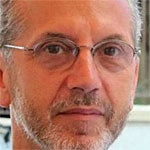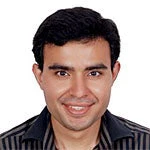
In March 2014, Liberia announced that there were two suspected cases of Ebola in Lofa and Nimba counties. Six months later, Ebola had spread to 14 of the 15 counties of the country and a state of emergency had been declared. By the time the World Health Organization (WHO) announced that Liberia was officially ‘Ebola free’ in May 2015, more than 10,000 Liberians had contracted the virus and the economic fortunes of the post conflict nation had faced a significant downturn.
Apart from an immediate impact on the country’s GDP (estimated to be three hundred million dollars), the education community was concerned that Ebola would have a lasting effect on the development of human capital.
Schools had to shut down for almost all of the 2014–2015 academic year and there were worries that students who had been out of school for such a long period may not return. A World Bank survey conducted in April 2015 found that only three quarters of respondents with primary school-aged children reported that their children returned to school.
With schools up and running again for the entire 2015 – 16 academic year, the Ministry of Education has been working in partnership with the World Bank to determine the impact of Ebola on enrollment trends. It’s important to note that this isn’t a straightforward exercise since Liberia’s next household survey is still a couple of years away and isn’t comprehensive.
Contrary to global trends, it appears that year on year enrollment was actually on the decline in Liberia pre – Ebola. Enrollment suffered a drop of 6.43% between the 2011–12 and 2012–13 school years (an entire year before the first Ebola outbreak). We have evidence from communities and local surveys to suggest that public schools started increasing fees during the 2013–14 school year for sports activities and Parent Teacher Association meetings and increased costs may have led to a decline in enrollment.
Enrollment declined again between 2013–14 and 2014–15 by 14.01%. The School Census was collected in May of both years, and so the 2014–15 data was collected two months after the first cases of Ebola were reported in Liberia. The possible risk of infection may have meant that some families were already hesitant to send their children to school. The data collection team vividly recall seeing teachers and students wearing gloves – particularly in regions where the virus struck first.
However, the post-Ebola recovery has been marked by a significant recovery and enrollment is up to the 2011 – 12 levels. It is easier to see this change graphically as a V shaped curve emerges with two periods of decline followed by a rapid rise in enrollment after Ebola.
- There is no data for 2014–15 as the school year barely lasted two full months in early 2015 before being shut again.

What may be the reason for the increase in enrollment? And why has enrollment risen to higher levels than pre Ebola?
Ebola brought renewed focus to the state of the education sector and an increase in funding for education. The Ministry of Education ran an active radio campaign to encourage children to come back to school. The incumbent Education Minister, George Werner, went to the most heavily affected counties in the country under his ‘back to school’ campaign. Public schools were dissuaded from charging any fees for sports or PTAs.
The World Bank, using funds from the Global Partnership for Education (GPE) grant and an Education Sector Ebola Recovery and Reconstruction Trust Fund, supported the schools in meeting the income shortfall by providing school grants. Moreover, GPE funds were used to procure and distribute more than a million textbooks during 2015, to facilitate better teaching and learning this year. This was the first time that textbooks were delivered to public schools in Liberia in more than a decade.
Other partners have also played an active role. UNICEF in particular was pivotal in providing WASH (water, sanitation and hygiene) support to schools in the form of hygiene packages and learning kits. There were also some impressive examples of coordination amongst development partners. For example, one partner delivered deworming medication purchased by another agency.
The Ebola epidemic in Liberia highlights some deeper challenges frequently witnessed in fragile countries: there is a strong demand for education even in the poorest countries but this demand can be ‘inconsistent’ causing a sudden influx of students after cyclical periods of sharp withdrawals in enrollment (due to civil war, natural disasters or health epidemics).
The uncertain demand puts additional burden on schools and governments alike. However, it is even more critical to focus on education in fragile countries because it helps the country develop resilience in the long term.
Though enrollment appears to be on the rise in Liberia once again, it is vital to ensure that the children that are in school acquire the literacy and numeracy skills that they need to stay in school and succeed in life. The World Bank will continue supporting Liberia in building a stronger education sector and providing Liberian children with access to quality education.
Find out more about the World Bank Group’s work on education on Twitter and Flipboard.
Read this feature story about the experiences of children going back to school after the Ebola outbreak.
Download the World Bank Group Ebola response fact sheet (April 2016).




Join the Conversation